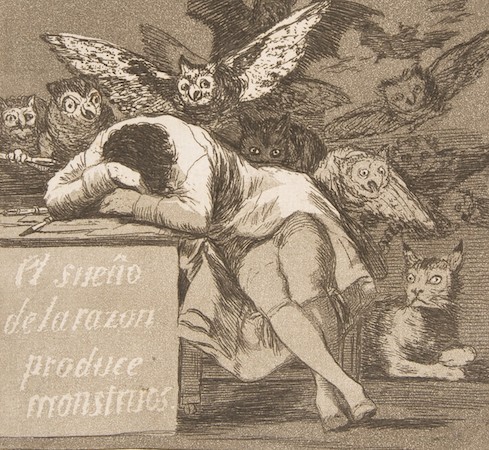Friday
For my Friday essays I’ve taken to examining the poem I post weekly in the Sewanee Mountain Messenger, which means that you’re getting my Halloween essay early. I’ll still write something for All Souls Day next week, however.
Anticipating Freud, Emily Dickinson finds horror’s true source to be the mind. Of Dickinson’s many poems about the darkness within, I particularly appreciate “One need not be a chamber to be haunted” because of its gothic trappings.
In it she contrasts internal haunting with Gothic stories about haunted houses, ghosts, midnight pursuers, and lurking assassins. Perhaps she has in mind such stories as Charles Brockden Brown’s Weiland, Edgar Allan Poe’s “Fall of the House of Usher” and Washington Irving’s “Headless Horseman.” Gothic stories were all the rage when Dickinson was writing, including those of Louise May Alcott.
I love the way Dickinson uses a short two syllables in each stanza’s final line to punctuate her point. “Whiter host,” “in lonesome place,” and “more near” each strike a more ominous chord than the contrasting gothic image. The exception makes the point: “Be horror’s least,” which appears in conjunction with a physical horror, is less powerful than “should startle most.” There’s nothing so frightening as when it’s our own self, “behind ourself concealed,” jumping out and shouting, “Boo!”
This is horror stripped down to its basics. Poetry, Dickinson show, can get closer to the true nature of horror than prose:
One need not be a chamber to be haunted,
One need not be a house;
The brain has corridors surpassing
Material place.
Far safer, of a midnight meeting
External ghost,
Than an interior confronting
That whiter host.
Far safer through an Abbey gallop,
The stones achase,
Than, moonless, one’s own self encounter
In lonesome place.
Ourself, behind ourself concealed,
Should startle most;
Assassin, hid in our apartment,
Be horror’s least.
The prudent carries a revolver,
He bolts the door,
O’erlooking a superior spectre
More near.


